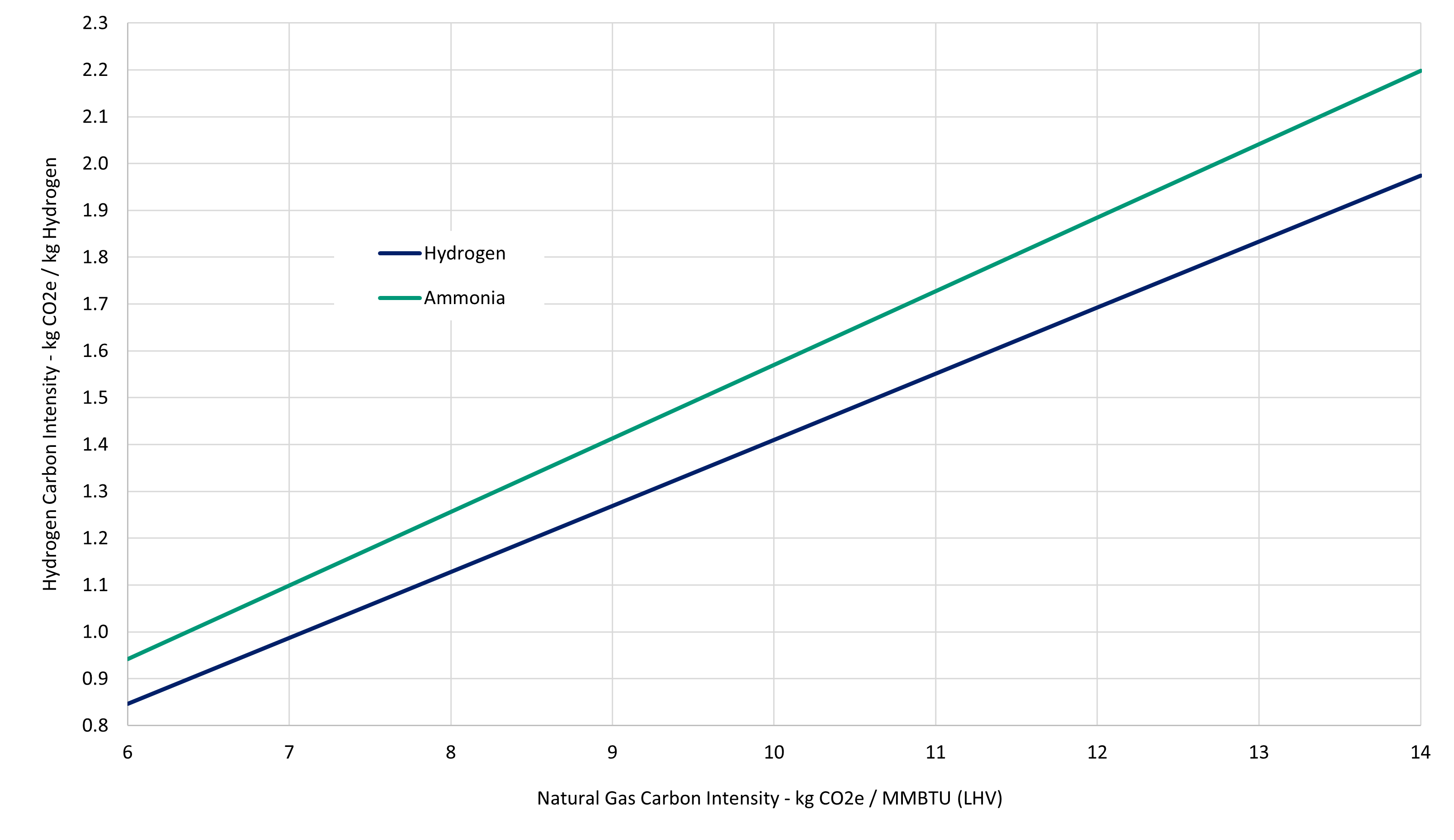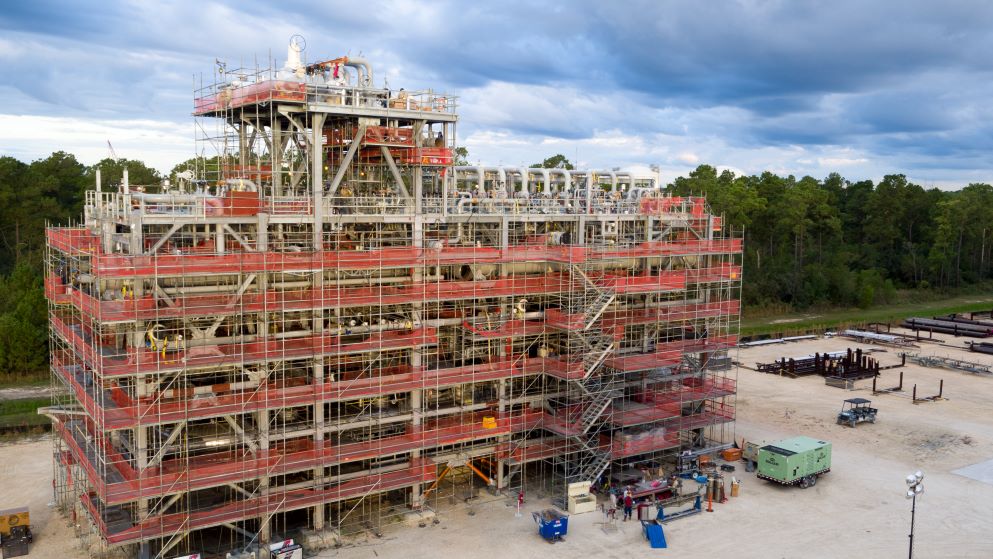Clean hydrogen production tax credit, explained part 4
Natural gas emissions calculations sometimes mean the difference between success and failure for low-carbon hydrogen projects, swinging the tax credits by tens or even hundreds of millions per year.
However, we’re finding significant market confusion about how to calculate these emissions. For example, what is the default carbon intensity of natural gas? What assumptions are made in the calculation? What can be done to reduce the carbon intensity?
In an effort to address these and other questions, we take a trip down the GREET (Greenhouse gases, Regulated Emissions, and Energy use in Transportation) model rabbit hole.
In Part 1 of this series on the 45V clean hydrogen production tax credit (PTC), we discussed questions about the definition of “qualified clean hydrogen”. In Part 2, we introduced the lifecycle analysis method for calculating emissions. In Part 3, we turned our attention to the emissions associated with power production.
Here, we dive into natural gas.
The Recap
The 2022 Inflation Reduction Act (IRA) created a new Section 45V production tax credit (PTC) for clean hydrogen. The tiered tax credit offers a higher credit amount for lower carbon-intensity hydrogen. The lowest tier (a nominal $0.60 per kg) requires a carbon intensity of less than four kg CO2e per kg of hydrogen. The highest tier (a nominal $3.00 per kg) requires the carbon intensity to be less than 0.45 kg CO2e per kg of hydrogen.
The IRA requires lifecycle emissions to be calculated using the GREET model on a well-to-gate basis, which includes feedstock supply, production and power consumption.
The Natural Gas Supply Chain
The United States boasts a strong and growing natural gas economy, with more than 30 trillion cubic feet produced annually, worth more than $100 billion (see Figure 1).

Figure 1 – U.S. natural gas consumption1
Power production accounts for about 37% of total consumption, with industrial use at about 33%. Net exports now account for more than 10% of production, driven by the explosive growth of shale gas production and the liquified natural gas (LNG) industry.
The natural gas supply chain includes several different elements often grouped into categories like those in Figure 2:
 Figure 2 – Natural gas supply chain2
Figure 2 – Natural gas supply chain2
Production includes exploration, drilling, and recovery of natural gas from the ground. Gas produced from various wells typically moves through a gathering pipeline system to processing plants for treatment.
Gas processing facilities remove the natural gas liquids or NGLs (ethane, propane, butane and natural gasoline), leaving a dry gas for transmission and distribution for final use.
How GREET Calculates Natural Gas Emissions
The GREET model calculates emissions for each step in the natural gas supply chain. GREET contains several standard “pathways” for natural gas, each with its own default assumptions (see Figure 3)3.
 Figure 3 – GREET default natural gas carbon intensities3
Figure 3 – GREET default natural gas carbon intensities3
As Figure 3 illustrates, the transmission distance accounts for nearly all the differences in GREET’s default natural gas carbon intensities. However, the logic behind these distance assumptions is not readily apparent.
GREET assumes that ammonia facilities are 575 miles from the gas plant, while methanol facilities are only 100 miles away. LNG liquefaction facilities are assumed to be a mere 50 miles away from natural gas production (which seems particularly odd).
GREET reports natural gas carbon intensity in units of kilograms (kg) of CO2e per million BTU (MMBTU) on a lower heating value (LHV) basis. Natural gas, however, is typically sold on a higher heating value (HHV) basis — generally about 10% higher than the LHV. We won’t go into the difference here, except to caution readers not to confuse the two.
As discussed in previous posts, the 45V PTC amount depends on the total carbon intensity of the hydrogen product (as opposed to the natural gas feedstock), so some math is required to convert the two (see Figure 4).
 Figure 4 – Conversion of natural gas CI to hydrogen CI
Figure 4 – Conversion of natural gas CI to hydrogen CI
For example, a natural gas carbon intensity of 13 kg CO2e per MMBTU translates to a hydrogen carbon intensity of 1.85 kg CO2e per kg of hydrogen — high enough to push a blue hydrogen project out of the top two tiers of 45V PTC eligibility, before even counting the emissions from production, power consumption, or CO2 sequestration.
The Combustion Emissions
One common misconception we encounter is that the carbon intensity of natural gas is comprised entirely of methane leaks, implying that very-low-leakage natural gas systems could therefore achieve nearly zero carbon intensity.
However, a large portion of the natural gas carbon intensity actually comes from what the GREET model terms “combustion” (see Figure 5)
 Figure 5 – GREET default natural gas carbon intensity by emission source5
Figure 5 – GREET default natural gas carbon intensity by emission source5
Combustion emissions are generated by fuels used in the production, processing, and transportation of natural gas (see Figure 6). Examples include:
- Diesel-driven equipment at the production site
- Fired heaters at the processing plant
- Compressors on the transmission pipeline
 Figure 6 – GREET natural gas combustion emission assumptions6
Figure 6 – GREET natural gas combustion emission assumptions6
Combustion emissions from transmission are a function of the assumed pipeline distance, but combustion emissions from production and processing are not. This means that even with zero leakage and zero transmission distance, the GREET model would still calculate a natural gas carbon intensity of 5 to 6 kg CO2e per MMBTU.
Methane Leakage Assumptions
Methane leaks are the other source of natural gas emissions modeled by GREET, which includes two default options for leakage assumptions – a “bottom up, top down” (BU/TD) option and an “EPA estimates” option (see Figure 7). (Unless otherwise noted, we’re using the BU/TD leakage assumptions for calculations in this post).
 Figure 7 – GREET natural gas leakage assumptions
Figure 7 – GREET natural gas leakage assumptions
Estimated natural gas methane leakage rates vary widely by geography and, to some extent, the estimator. S&P, for instance, puts the average methane leakage for U.S. natural gas production at 0.44%, slightly higher than the GREET model’s default value of 0.40% (see Figure 8).
 Figure 8 – S&P Methane Emissions Estimates4
Figure 8 – S&P Methane Emissions Estimates4
Simply comparing the bottom-line leakage percentages can be misleading, as estimates often include differing assumptions around system boundaries and calculation methods. To address these differences, a patchwork of terminology and specifications has emerged.
The terms “responsibly sourced gas” (RSG) and “certified gas” are often used to describe natural gas that meets a specified emissions rate and, in some cases, other environmental criteria.
A group called MiQ publishes standards for measuring and assessing methane emissions in the natural gas supply chain and has created an A through F grading system. Other groups such as Project Canary provide auditing and certification services based on their own rating systems (which are silver, gold and platinum for Project Canary).
S&P issues Methane Performance Certificates (MPCs) to natural gas producers based on their methane emissions. MPCs can be unbundled from the underlying natural gas and traded separately, providing consumers with a non-physical method to reduce their natural gas carbon intensity.
The Summary
We’ve heard the low-emission natural gas industry described as the wild, wild west, and we don’t disagree. Numerous frameworks and press releases abound — some overlapping, others conflicting. Moreover, while many of the ideas are gaining traction among industrial players, how the IRS will treat them for 45V PTC remains to be seen.
Ultimately, a few options exist for consumers looking to reduce the carbon intensity of their natural gas (and thereby increase their tax credits):
- Purchase natural gas from a low-carbon source — e.g., landfills or dairy digestors
- Measure, reduce, and certify the leakage of the natural gas they purchase. (Or buy offsetting low-emission certificates, if allowed by IRS)
- Reduce the transmission pipeline distance between production and consumption
We expect future standardization and consensus to emerge around natural gas carbon intensity, particularly after the IRS issues guidance on 45V hydrogen tax credit rules. Until then, we’ll continue to track the rapid pace of development.
Disclaimer:
The information in this blog has been provided by S&B for general information purposes. It does not constitute legal, accounting, tax or other professional advice or services and is presented without any representation or warranty as to the accuracy or completeness of the information. For advice relative to any of the categories stated, recipients should consult their own attorneys, accountants, or other professional advisors.
[1] Figure 1 Source: U.S. Energy Information Administration; www.eia.gov/naturalgas/data.php
[2] Figure 3 Source: Driving Down Methane Leaks from the Oil and Gas Industry”, IEA; www.iea.org/reports/driving-down-methane-leaks-from-the-oil-and-gas-industry
[3] GREET 1 model (2022 version); greet.es.anl.gov
[4] Figure 8 Source: S&P Methane Intensity Premiums; www.spglobal.com/commodityinsights/ko/products-services/natural-gas/methane-intensity-premiums




